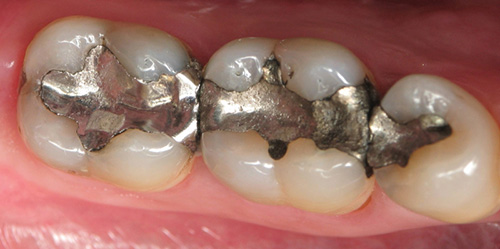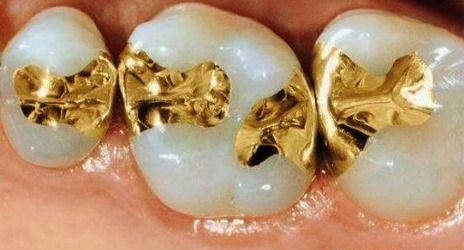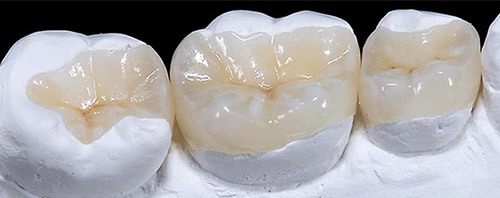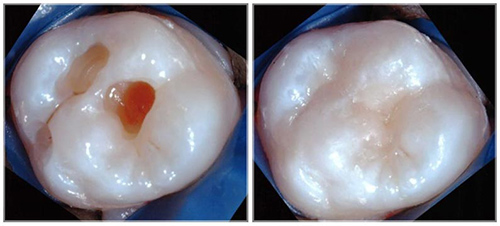Dental Fillings
Dental Fillings are unfortunately very common in the India with 84% of adults having at least one or more fillings and each of those adults having on average 7 fillings. This is a direct result of only 42% of adults using a toothbrush and toothpaste for their oral care and only 21% of adults visiting the dentist annually. These factors combine to mean that dental decay is more likely to occur and less likely to be detected and prevented. This means that the likelihood of having dental fillings is increased in the long-term.
So if you need to have a dental filling, which one is best and what are your options? What are the different types of dental fillings ?
There are four types of filling available:
- Amalgam.
- Gold.
- Ceramic.
- Composite.
Amalgam fillings

These are an amalgamation of various metals, including mercury, silver, tin and copper. They are often known as silver fillings due to their silver looking appearance when they have been placed.
Gold dental fillings

As the name suggests these fillings are made from gold although they will also contain various other metals. Typical gold dental fillings will consist of typically 75% gold with the remainder being made up of palladium, silver and a few other minor metals.
Ceramic fillings

These are made from high grade dental ceramic material by a dental technician. The ceramic itself is not inherently strong when compared to gold, however, the ceramic filling is chemically bonded to your tooth very much like a laminated windscreen on your car. By bonding the filling and the tooth together the strength increases exponentially. Ceramic fillings, because they are made by dental technician, can be made to look extremely natural.
Composite fillings

Sometimes known as direct fillings as these are made with a tooth coloured putty like material which your dentist applies directly to your tooth in the surgery whilst you wait, without the need for a dental technician to be involved. The composition of these composite fillings is extremely complex and includes a light sensitive component which cures to form the hard filling material when a high-powered light is applied to it. Because these fillings are applied directly into your mouth by the dentist they can also look extremely natural.
Advantages and disadvantages of different types of dental filling.
Pros and cons of Amalgam fillings
The advantages of amalgam fillings is that they have a proven track record in dentistry and have been used extremely successfully for many years. Your dentist typically has to remove only the barest minimum of tooth structure in order to place the amalgam. Your dentist will remove the decayed area and no more, with a ceramic or gold filling your dentist may have to reduce some healthy tooth structure in order to create a path of insertion for the new ceramic filling to be fitted.
Most dentists prefer to retain as much healthy tooth as possible, making amalgam fillings a desirable option.
Amalgam is also reasonably cheap to purchase and quick to place meaning it is the most cost-effective and cheapest dental fillings available.
Regarding disadvantages, many people nowadays are concerned about the use of mercury and it is for this reason that some patients do not wish to have amalgam fillings.
Pros and cons of Dental Gold fillings
Gold is one of the most bio-compatible materials that we can use. It has a very smooth surface when polished and is therefore extremely kind to any tooth which is opposing it. This keeps opposing tooth wear to an absolute minimum and ensures that your bite is not affected.
Some types of filling, especially ceramic, can sometimes be abrasive to your opposing teeth and wear them away over a number of years. Gold does not do this.
However, as you can imagine, gold is a very expensive material to purchase and so the cost of a gold filling tends to be considerably higher than any other type of dental filling. It is also required that a dental technician manufactures the gold filling, because this highly skilled professional is involved in the process the cost also increases significantly.
Pros and cons of Dental Ceramic Fillings
The dental ceramic used is inherently not as strong as gold. However, as previously mentioned, when it is chemically bonded to your tooth it forms a very strong union with your natural tooth structure creating an overall strong result.
This means ceramic fillings have a very good longevity and can last a considerable number of years. Because they are made by highly skilled dental technician. They also have the advantage of looking extremely good and being almost undetectable.
One of the disadvantages of ceramic fillings is the cost, they are often more expensive to produce and so end up more expensive to you as the patient. They can also sometimes be slightly more abrasive than other forms of filling, this can lead to wear on your opposing tooth if they are not correctly made, fitted and checked afterwards.
Pros and cons of Composite White Dental Fillings
White composite fillings are some of the most commonly used fillings in dentistry today. This is because they are relatively cheap and inexpensive for you as a patient, they look good, last a long time and have a good history of clinical research.
In many situations they are the filling of choice.
One of the few disadvantages of composite fillings is that they can stain over time and pick up colourant from food that you eat and beverages that you drink, for this reason they are most commonly used on back teeth rather than front teeth.
They are also slightly softer than any of the other fillings which means they have a higher wear rate. In extreme cases, if the patient chews particularly aggressively then they can wear down and need replacing. However, because they are fitted directly by the dentist they are also very easy to repair. So if they break or wear down your dentist can easily build them back up again at minimal cost.
To know more call us on 8137999943 / 9446239984 or email us your query on info@monarchdentalcare.in.
